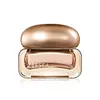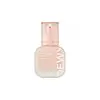What's inside
What's inside
 Key Ingredients
Key Ingredients

 Benefits
Benefits

 Concerns
Concerns

 Ingredients Side-by-side
Ingredients Side-by-side

Water
Skin ConditioningButylene Glycol
HumectantPEG-240
HumectantPolyamino Sugar Condensate
HumectantPropylene Glycol
HumectantNiacinamide
SmoothingHydroxyacetophenone
AntioxidantCaprylhydroxamic Acid
Glyceryl Caprylate
EmollientPPG-26 Butyl Ether
Skin ConditioningPEG-40 Hydrogenated Castor Oil
EmulsifyingNelumbium Speciosum Flower Oil
Skin ConditioningPotassium Laurate
EmulsifyingTocopherol
AntioxidantRosa Hybrid Flower Extract
Skin Conditioning3-O-Ethyl Ascorbic Acid
Skin ConditioningDipotassium Glycyrrhizate
HumectantGardenia Florida Fruit Extract
Skin Conditioning1,5-Pentanediol
SolventSodium Polyglutamate
HumectantSodium Acetylated Hyaluronate
HumectantSodium Hyaluronate
HumectantSodium Hyaluronate Crosspolymer
HumectantStephania Tetrandra Root Extract
Skin ConditioningHydrolyzed Sodium Hyaluronate
Skin ConditioningGentiana Scabra Extract
HumectantEthylhexylglycerin
Skin ConditioningWater, Butylene Glycol, PEG-240, Polyamino Sugar Condensate, Propylene Glycol, Niacinamide, Hydroxyacetophenone, Caprylhydroxamic Acid, Glyceryl Caprylate, PPG-26 Butyl Ether, PEG-40 Hydrogenated Castor Oil, Nelumbium Speciosum Flower Oil, Potassium Laurate, Tocopherol, Rosa Hybrid Flower Extract, 3-O-Ethyl Ascorbic Acid, Dipotassium Glycyrrhizate, Gardenia Florida Fruit Extract, 1,5-Pentanediol, Sodium Polyglutamate, Sodium Acetylated Hyaluronate, Sodium Hyaluronate, Sodium Hyaluronate Crosspolymer, Stephania Tetrandra Root Extract, Hydrolyzed Sodium Hyaluronate, Gentiana Scabra Extract, Ethylhexylglycerin
Water
Skin ConditioningCyclopentasiloxane
EmollientMethyl Trimethicone
Skin ConditioningEthylhexyl Methoxycinnamate
UV AbsorberButylene Glycol
HumectantZinc Oxide
Cosmetic ColorantCyclohexasiloxane
EmollientButylene Glycol Dicaprylate/Dicaprate
EmollientTitanium Dioxide
Cosmetic ColorantGlycerin
HumectantPEG-10 Dimethicone
Skin ConditioningPhenylbenzimidazole Sulfonic Acid
UV AbsorberTromethamine
BufferingDisteardimonium Hectorite
Stabilising1,2-Hexanediol
Skin ConditioningAcrylates/Stearyl Acrylate/Dimethicone Methacrylate Copolymer
Diethylamino Hydroxybenzoyl Hexyl Benzoate
UV FilterPanthenol
Skin ConditioningCetyl PEG/PPG-10/1 Dimethicone
EmulsifyingRosa Damascena Flower Water
MaskingMagnesium/Potassium/Silicon/Fluoride/Hydroxide/Oxide
Synthetic Fluorphlogopite
Dimethicone
EmollientSodium Chloride
MaskingZinc Stearate
Cosmetic ColorantAcrylates/Ethylhexyl Acrylate/Dimethicone Methacrylate Copolymer
Skin ConditioningStearic Acid
CleansingAluminum Hydroxide
EmollientDimethicone/PEG-10/15 Crosspolymer
Distearyldimonium Chloride
Triethoxycaprylylsilane
Palmitic Acid
EmollientNiacinamide
SmoothingTriethoxysilylethyl Polydimethylsiloxyethyl Hexyl Dimethicone
Skin ConditioningTin Oxide
AbrasiveDipropylene Glycol
HumectantTocopherol
AntioxidantSodium Citrate
BufferingGlycine Soja Oil
EmollientPentaerythrityl Tetra-Di-T-Butyl Hydroxyhydrocinnamate
AntioxidantLeontopodium Alpinum Flower/Leaf Extract
Skin ConditioningAvena Sativa Kernel Extract
AbrasiveParfum
MaskingLinalool
PerfumingCitronellol
PerfumingLimonene
PerfumingHydroxycitronellal
PerfumingCI 77891
Cosmetic ColorantCI 77492
Cosmetic ColorantCI 77491
Cosmetic ColorantWater, Cyclopentasiloxane, Methyl Trimethicone, Ethylhexyl Methoxycinnamate, Butylene Glycol, Zinc Oxide, Cyclohexasiloxane, Butylene Glycol Dicaprylate/Dicaprate, Titanium Dioxide, Glycerin, PEG-10 Dimethicone, Phenylbenzimidazole Sulfonic Acid, Tromethamine, Disteardimonium Hectorite, 1,2-Hexanediol, Acrylates/Stearyl Acrylate/Dimethicone Methacrylate Copolymer, Diethylamino Hydroxybenzoyl Hexyl Benzoate, Panthenol, Cetyl PEG/PPG-10/1 Dimethicone, Rosa Damascena Flower Water, Magnesium/Potassium/Silicon/Fluoride/Hydroxide/Oxide, Synthetic Fluorphlogopite, Dimethicone, Sodium Chloride, Zinc Stearate, Acrylates/Ethylhexyl Acrylate/Dimethicone Methacrylate Copolymer, Stearic Acid, Aluminum Hydroxide, Dimethicone/PEG-10/15 Crosspolymer, Distearyldimonium Chloride, Triethoxycaprylylsilane, Palmitic Acid, Niacinamide, Triethoxysilylethyl Polydimethylsiloxyethyl Hexyl Dimethicone, Tin Oxide, Dipropylene Glycol, Tocopherol, Sodium Citrate, Glycine Soja Oil, Pentaerythrityl Tetra-Di-T-Butyl Hydroxyhydrocinnamate, Leontopodium Alpinum Flower/Leaf Extract, Avena Sativa Kernel Extract, Parfum, Linalool, Citronellol, Limonene, Hydroxycitronellal, CI 77891, CI 77492, CI 77491
Ingredients Explained
These ingredients are found in both products.
Ingredients higher up in an ingredient list are typically present in a larger amount.
Butylene Glycol (or BG) is used within cosmetic products for a few different reasons:
Overall, Butylene Glycol is a safe and well-rounded ingredient that works well with other ingredients.
Though this ingredient works well with most skin types, some people with sensitive skin may experience a reaction such as allergic rashes, closed comedones, or itchiness.
Learn more about Butylene GlycolNiacinamide is a multitasking form of vitamin B3 that strengthens the skin barrier, reduces pores and dark spots, regulates oil, and improves signs of aging.
And the best part? It's gentle and well-tolerated by most skin types, including sensitive and reactive skin.
You might have heard of "niacin flush", or the reddening of skin that causes itchiness. Niacinamide has not been found to cause this.
In very rare cases, some individuals may not be able to tolerate niacinamide at all or experience an allergic reaction to it.
If you are experiencing flaking, irritation, and dryness with this ingredient, be sure to double check all your products as this ingredient can be found in all categories of skincare.
When incorporating niacinamide into your routine, look out for concentration amounts. Typically, 5% niacinamide provides benefits such as fading dark spots. However, if you have sensitive skin, it is better to begin with a smaller concentration.
When you apply niacinamide to your skin, your body converts it into nicotinamide adenine dinucleotide (NAD). NAD is an essential coenzyme that is already found in your cells as "fuel" and powers countless biological processes.
In your skin, NAD helps repair cell damage, produce new healthy cells, support collagen production, strengthen the skin barrier, and fight environmental stressors (like UV and pollution).
Our natural NAD levels start to decline with age, leading to slower skin repair, visible aging, and a weaker skin barrier. By providing your skin niacinamide, you're recharging your skin's NAD levels. This leads to stronger, healthier, and younger looking skin.
Another name for vitamin B3 is nicotinamide. This vitamin is water-soluble and our bodies don't store it. We obtain Vitamin B3 from either food or skincare. Meat, fish, wheat, yeast, and leafy greens contain vitamin B3.
The type of niacinamide used in skincare is synthetically created.
Learn more about NiacinamideTocopherol (also known as Vitamin E) is a common antioxidant used to help protect the skin from free-radicals and strengthen the skin barrier. It's also fat soluble - this means our skin is great at absorbing it.
Vitamin E also helps keep your natural skin lipids healthy. Your lipid skin barrier naturally consists of lipids, ceramides, and fatty acids. Vitamin E offers extra protection for your skin’s lipid barrier, keeping your skin healthy and nourished.
Another benefit is a bit of UV protection. Vitamin E helps reduce the damage caused by UVB rays. (It should not replace your sunscreen). Combining it with Vitamin C can decrease sunburned cells and hyperpigmentation after UV exposure.
You might have noticed Vitamin E + C often paired together. This is because it is great at stabilizing Vitamin C. Using the two together helps increase the effectiveness of both ingredients.
There are often claims that Vitamin E can reduce/prevent scarring, but these claims haven't been confirmed by scientific research.
Learn more about TocopherolWater. It's the most common cosmetic ingredient of all. You'll usually see it at the top of ingredient lists, meaning that it makes up the largest part of the product.
So why is it so popular? Water most often acts as a solvent - this means that it helps dissolve other ingredients into the formulation.
You'll also recognize water as that liquid we all need to stay alive. If you see this, drink a glass of water. Stay hydrated!
Learn more about Water